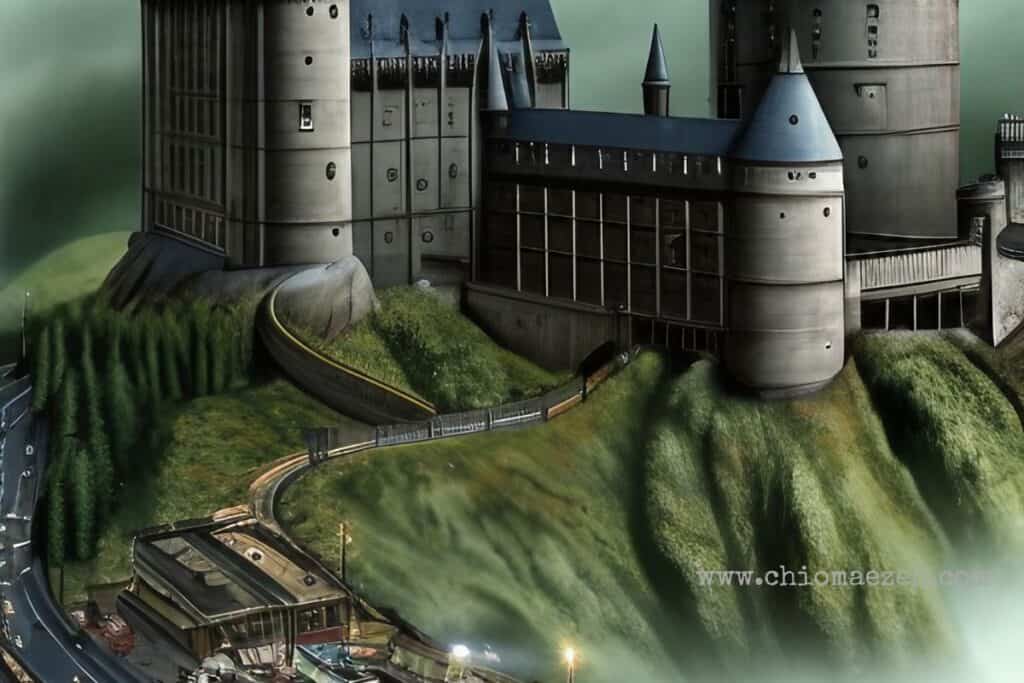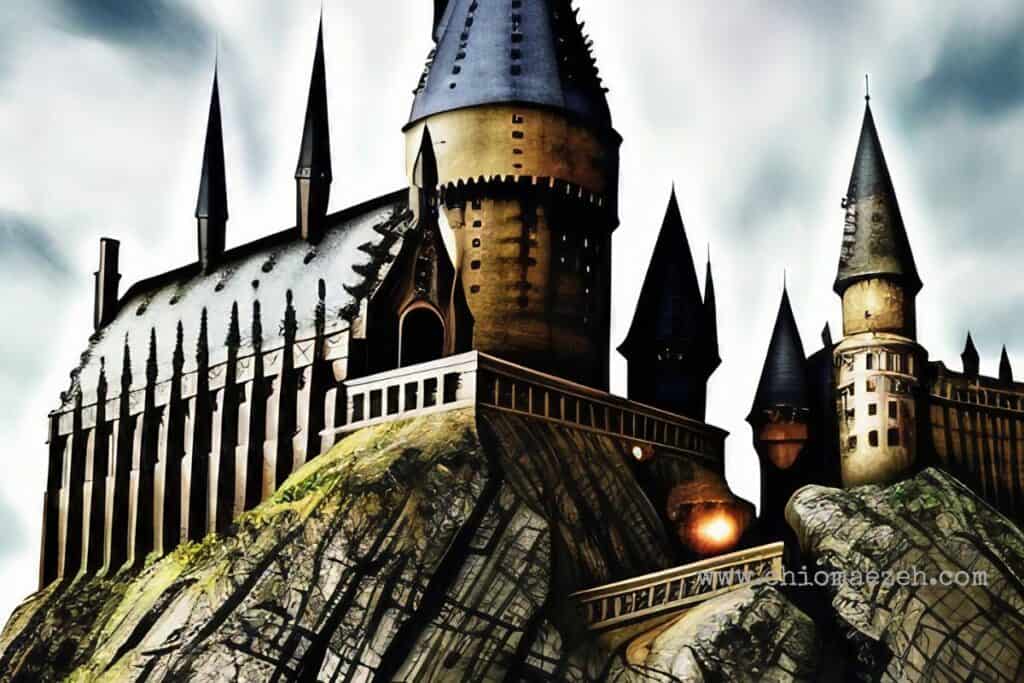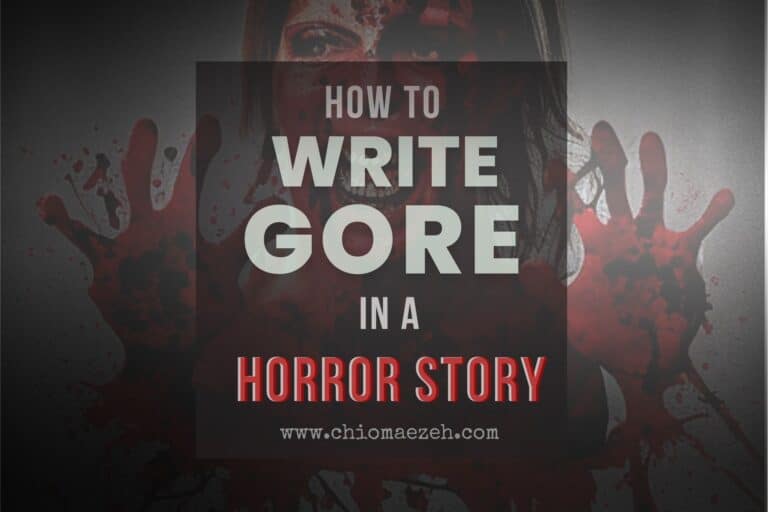Examples of Settings in Books [15 Popular Stories Dissected]
“Tales of enchantment, tales that entrance – we’re all aware of their captivating might.” But what makes these stories so captivating? What draws us in and keeps us reading page after page? A lot has to do with the settings, which often serve as a backdrop for events that take you on an unforgettable journey.
In this post, we’ll take a look at some classic and modern examples of settings in books and several genres such as Jane Austen’s Pride and Prejudice, Douglas Adams’ The Hitchhiker’s Guide to the Galaxy, Gillian Flynn’s Gone Girl, Harper Lee’s To Kill A Mockingbird, The Great Gatsby, Farenhiet 451, Things Fall Apart, Frankenstein, The Most Dangerous Game, Monkey Paw; plus thrillers like Stieg Larsson’s The Girl With The Dragon Tattoo – all topped off by J.K Rowling’s Harry Potter series.
Let’s dive into how authors have used settings to bring their stories alive through vivid descriptions that transport readers directly into their world.
👉 Want to learn more about settings and it impacts your story? Head over to our guide on settings of a story

Let’s Talk
Are you a writer aspiring to pen a masterpiece that never fails to captivate? Look no further. Reach out to us and uncover how we can help you to take your writing to unprecedented heights!

Examples of Settings in Books – Overview
Examples of Settings in Books
1. Fantasy: J.K. Rowling’s Harry Potter series
Rowling’s iconic Harry Potter fantasy saga has enthralled readers for years, weaving a magical tale of daring exploits and hidden powers in the enchanting realm of Hogwarts. Set in the fictional world of Hogwarts, it follows the adventures of Harry Potter and his friends as they battle evil forces and discover secrets about their magical abilities.

Time settings: The series takes place over seven years from 1991 to 1998 with each book covering one year at Hogwarts School of Witchcraft and Wizardry.
Location: Most scenes take place in either Hogwarts or London but there are also visits to other locations such as Diagon Alley, Hogsmeade, Godric’s Hollow, Azkaban Prison, Gringotts Bank, and even Quidditch matches held outside Britain’s borders.
Mood And Atmosphere: Throughout the books there is an atmosphere of mystery and suspense combined with moments of joyous celebration when good triumphs over evil. There are also dark moments when tragedy strikes close to home which add depth to the story line.
The physical environment: From the grandeur of Hogwarts castle itself down to its dungeons filled with strange creatures such as trolls or giant spiders lurking in dark corners, ready to ambush unsuspecting victims – every detail is accounted for.
Cultural influences: from around Europe are reflected in the series, with names used for characters such as Draco Malfoy, food eaten during meals like eel pie, and spells cast using Latin words. These details help bring an air of authenticity to this fictional world, making it more believable.
Key Takeaway: Rowling’s Harry Potter series offers a vivid, intricate portrayal of both physical and social milieus as well as European cultural influences, thereby endowing the imaginary world with verisimilitude and immersiveness.
2. Horror: Stephen King’s “The Shining”
Stephen King’s 1977 horror novel, “The Shining,” takes place in the 1970s and follows Jack Torrance as he accepts a position as winter caretaker at an isolated hotel in Colorado. The story follows Jack Torrance as he takes a job as an off-season caretaker at the isolated Overlook Hotel in Colorado. As Jack’s family settles into their new home, they soon discover that the hotel has secrets of its own.
Time Settings: The novel is set during the late 1970s with most of it taking place over one winter season.
Location: Most of the action takes place within or around the Overlook Hotel which is located high up in the Rocky Mountains near Estes Park, Colorado.
Mood And Atmosphere: Throughout much of The Shining there are feelings of dread and suspense as readers follow Jack’s descent into madness while trying to protect his family from danger lurking inside and outside of the hotel walls.
Physical Environment: Much like any old abandoned building, there are creaking floorsboards, broken windows and doors that don’t quite fit right due to age and weathering; however this adds to overall eerie atmosphere created by King.
Social Environment: There isn’t much interaction between characters other than what occurs between members of Jack’s family or when they encounter ghosts from past events that took place at Overlook Hotel such as those who died tragically long ago when it was still open for business.
Cultural Influences: While not explicitly stated within The Shining itself, many have speculated that some elements may be inspired by Native American folklore about spirits living among us after death or even references to supernatural entities found in Christianity such as angels or demons.
Climate: Since the majority of the story takes place during winter months, we can assume temperatures would be cold enough for snowfall which only adds to the tension since roads leading up the mountain become impassable.
The Shining is a classic example of horror, setting the tone for future stories in the genre and providing an iconic backdrop for its characters. Now, let’s explore another example of setting in Agatha Christie’s Murder on the Orient Express.
3. Mystery: Agatha Christie’s Murder on the Orient Express
Agatha Christie’s Murder on the Orient Express is a classic mystery novel set in 1934. The story follows Belgian detective Hercule Poirot as he investigates a murder aboard the famous train, which travels from Istanbul to Calais. Time settings: The action of the novel takes place over several days and nights while traveling on board the Orient Express.
Location settings: Most of the action occurs within one compartment of the train, but there are also scenes at various stops along its route, including Belgrade and Vincovci in Serbia; Nish in Bulgaria; and Paris in France.
Mood And Atmosphere: The mood of this novel is suspenseful and mysterious with a sense of danger lurking around every corner. The sense of entrapment in a limited area for an extended period creates a tense, mystifying atmosphere.
Climate: Weather conditions play an important role throughout this book – rainstorms add drama when trying to solve clues outside or heavy snowfall making travel difficult between locations, adding further obstacles for Poirot’s investigation.
Key Takeaway: The time, location and atmosphere of Agatha Christie’s Murder on the Orient Express are integral to its suspenseful mystery, with rainstorms, snowfall and claustrophobia adding drama throughout.
4. Myth: “The Percy Jackson series” by Rick Riordan
The Percy Jackson series by Rick Riordan is set in the modern day world, with a few mythical elements thrown in. Percy Jackson, a demigod offspring of Poseidon, finds himself on an epic mission to preserve the world from ruin after discovering his true lineage.
The narrative unfolds in the here and now of America, Greece, Olympus, Tartarus and other such legendary domains.
Location settings: Locations featured throughout the series include Camp Half-Blood (a training camp for young demigods), New York City, Washington D.C., Los Angeles, San Francisco, Las Vegas, Mount Olympus (the home of the gods), Hades’ realm (the Underworld) and various other places.
Mood And Atmosphere: The moods of this series range from lighthearted adventure to serious danger depending on what part of their journey they are currently undertaking.
Physical Environment: Much like our own world, the Percy Jackson series is filled with a variety of magical and mythical creatures. Forests are populated by centaurs and satyrs; deserts contain monsters; oceans house sea monsters; cities teem with gods and goddesses; mountains are home to dragons; volcanoes host fire giants; caves guard cyclopes. These environments create an exciting atmosphere for readers to explore alongside Percy Jackson as he embarks on his quests.
Social Environment: Throughout this series we get to meet many different characters including humans both mortal and immortal alike. We also get to see how different cultures interact within this universe such as Greek mythology vs Roman mythology or even Gods interacting amongst themselves.
Cultural influences: This series draws heavily upon ancient Greek culture & mythology which can be seen through its characters & plot points but it also incorporates some aspects from other mythologies too like Norse & Egyptian myths.
Climate: Hot sunny days at times followed by thunderstorms or snow storms, depending on where they are travelling at any given moment.
The Percy Jackson series by Rick Riordan is a great example of an adventure story with fantastical elements, and serves as inspiration for many aspiring authors. Let us delve into the celebrated composition of Jane Austen, Pride and Prejudice, with its intricate intricacies.
5. Romance: Pride and Prejudice by Jane Austen
Time settings: Pride and Prejudice is a romantic story set in the early 19th century England, a time of great social change. The novel spans a period of months, commencing in the 1813 springtime and culminating with an auspicious double wedding at Yuletide.
Location settings: Most of the action takes place in Hertfordshire County, located about 50 miles northwest of London. Other locations include Kent (where Mr. Darcy’s estate is located), London (where Elizabeth visits her aunt and uncle Gardiner) and Derbyshire (the home county of Mr. Darcy).
Mood And Atmosphere: Jane Austen creates an atmosphere that is both lighthearted and serious at times. The mood changes from one scene to another as characters experience events such as balls or dinners out on country estates.
Social Environment: We see how society during this era was very much based upon class distinction where people were judged by their wealth , status , connections etc This plays a critical part in the narrative, with certain figures wielding greater influence due to their higher social standing.
Cultural influences: Pride & Prejudice reflects many aspects from British culture such as gender roles, marriage expectations, family dynamics, etc. For instance we see how women were expected to be submissive towards men while also having limited rights compared to them; similarly men had certain expectations placed upon them too when it came down finding suitable partners through arranged marriages or otherwise .
Key Takeaway: The early 19th century English society depicted in Jane Austen’s Pride and Prejudice was a reflection of the period’s cultural conventions, with gender roles and marriage expectations having significant implications.
6. Sci-fi: The Hitchhiker’s Guide to the Galaxy
The Hitchhiker’s Guide to the Galaxy is a comedic sci-fi narrative penned by Douglas Adams, following Arthur Dent’s escapades as he is saved from Earth before its destruction and then ventures off into space with his extraterrestrial buddy Ford Prefect.
It follows the adventures of Arthur Dent, an Englishman who is rescued from Earth moments before it is destroyed and embarks on a journey across space with his alien friend Ford Prefect. The narrative traverses both the past and future, as some happenings transpire in our current age while others unfold eons henceforth.
Location settings vary throughout this story, ranging from Earth to outer space. In particular, readers are taken to many different planets such as Magrathea and Vogsphere.
Mood and atmosphere: From humorous scenes involving comedic dialogue between characters, to suspenseful scenes where danger lurks around every corner. There are also elements of mystery as Arthur discovers more about himself and his purpose in life during his space travels.
Physical environments: From lush forests filled with exotic plants on foreign planets like Magrathea or Vogsphere; to desolate wastelands like those found on Earth after it was destroyed.
Social environments: Interactions between humans (or human-like creatures) living amongst aliens or robots in various societies that have their own set of rules governing them.
Cultural influences are pervasive throughout The Hitchhiker’s Guide To The Galaxy series, as various themes such as technology versus nature and individualism versus collectivism are explored in an intergalactic context.
Climate varies greatly depending on each location within the universe. Some planets may be scorching hot due to their proximity near stars while others could be freezing cold due to being located farther away from any heat source.
Key Takeaway: This narrative provides readers a rare chance to investigate novel realms and customs, reflecting on classical conceptions of community, shedding light on how distinct societies cope when confronted with difficulty.
7. Psychological Thriller: Gone Girl by Gillian Flynn
Gone Girl by Gillian Flynn is a psychological thriller novel that follows the story of Nick and Amy Dunne.
The time setting for this book is present day, with flashbacks to five years prior when the couple first met.
Location settings in Gone Girl include New York City and North Carthage, Missouri. Both locales are vital to the story, unveiling Nick’s past and present circumstances.
The mood and atmosphere of Gone Girl are dark, suspenseful, and intense. There is an underlying tension throughout the entire book that keeps readers on edge until its conclusion.
The physical environment: consists mostly of suburban homes in North Carthage, Missouri where most of the action takes place. This small town provides a stark contrast to New York City which serves as a reminder of Nick’s former life.
The social environment: filled with secrets and lies between characters who have known each other for years or just recently met through chance encounters.
Cultural influences play an important role in this novel as well; many references are made to popular culture such as television shows like Law & Order: SVU which helps set up certain expectations about how things will turn out for various characters involved.
Gone Girl offers a thrilling ride of unexpected turns, leaving readers in suspense until the conclusion. With Harper Lee’s To Kill A Mockingbird, we will explore another example of classic literature with timeless themes.
8. Historical Fiction: Harper Lee’s To Kill A Mockingbird
Time and location: Harper Lee’s classic novel, To Kill a Mockingbird, is set in the fictional town of Maycomb, Alabama during the 1930s.
The mood and atmosphere of this story are characterized by feelings of oppression and injustice. This is due to the racial tensions that exist between white people and black people living in the same area.
The physical environment of Maycomb is described as an old-fashioned Southern town with dirt roads and houses made from wood or brick. At the town’s hub stands a courthouse, an emblem of justice and righteousness.
Social environment: To Kill a Mockingbird mirrors the disparity between classes, as well as the racial discrimination among whites and African Americans. In particular, there are two distinct groups: those who live on “the right side” (i.e., wealthy whites) versus those who live on “the wrong side” (poor blacks). This dichotomy generates a feeling of unease throughout the narrative, as characters grapple with their own preconceived notions while striving to do what is just for others.
Key Takeaway: Racism and class divisions are central themes in Harper Lee’s To Kill a Mockingbird, with cultural influences driving how characters interact with each other and shape their views on race relations.
9. Crime Thriller: The Girl with the Dragon Tattoo by Stieg Larsson
The Girl with the Dragon Tattoo, penned by Stieg Larsson, is an exciting whodunit situated in Sweden. The story follows Mikael Blomkvist, an investigative journalist and publisher of a magazine called Millennium. He is hired to investigate the disappearance of Harriet Vanger forty years ago from her family’s island estate on Hedeby Island.
Time Setting: The events in this novel take place between December 2002 and April 2003.
Location Settings: Most of the action takes place on Hedeby Island, which is located off the coast of Sweden near Stockholm. Other locations include Stockholm itself as well as Hedestad, where Harriet Vanger’s family lives; Gosseberga; and various other places throughout Sweden.
Cultural influences: Swedish culture (such as food) and references to Norse mythology which adds depth to some characters’ motivations.
Climate: Much of this book takes place during winter so it can be assumed that temperatures were quite low at times; however, no specific temperature ranges are given.
Are you an aspiring scribe in search of methods to refine your art? One of the most important elements in creating a compelling story is setting. Examples of settings in books can range from vast and intricate worlds, such as J.R.R Tolkien’s Middle Earth, to more simple and relatable locales like the small town featured in To Kill A Mockingbird by Harper Lee. In this blog post we will take a look at some classic examples of settings found within popular novels throughout history so that you may gain insight into how to effectively construct your own stories.
10. The Great Gatsby
Time: The Great Gatsby is set in the Roaring Twenties, a time of great wealth and excess. The 1920s were a period of affluence and opulence for some, yet concurrently marked by the emergence of criminal gangs, prejudice-fueled discord, and outlawed alcohol.
Location: The novel takes place primarily in West Egg on Long Island Sound near New York City. This affluent region, situated on Long Island Sound near New York City, was a favored destination for the moneyed elite seeking to evade the chaos of metropolitan life.
Mood and Atmosphere: The mood of The Great Gatsby is both nostalgic and melancholic. There’s an air of sadness throughout much of the novel as characters grapple with unrequited love, broken dreams, class divisions, death, and moral decay.
Physical environment: Much like its characters’ lives, West Egg is filled with decadence – from lavish mansions to extravagant parties – yet it’s also full of loneliness due to its transient nature. Its streets are lined with ostentatious cars while its lawns boast overgrown shrubbery; these symbols allude to how out-of-touch those living there have become from reality outside their bubble.
Social environment: Social status plays a major role in this book; money buys privilege which allows people access into exclusive circles where they can mingle with other affluent members within society – whether or not they truly belong there remains up for debate amongst readers.
Cultural Influences: Jazz music plays heavily into Fitzgerald’s narrative; it serves as both background noise at Jay Gatsby’s wild parties as well as a symbol for his own pursuit after Daisy Buchanan (who he compares himself to being “like gatsby standing alone on the pier…listening to distant music”). Additionally during this time period women were beginning to gain more rights such as voting which allowed them greater freedom than before when they were often seen simply as housewives or decorations at social events rather than having any real power or influence beyond that realm .
The Great Gatsby is a timeless classic that demonstrates the power of setting to shape a story. By looking at how each location and its characters were used, we can gain insight into how settings can be used in our own stories. Now let’s take a look at another example with Fahrenheit 451.
Key Takeaway: The Great Gatsby’s setting reflects the social, cultural and economic conditions of its time: money buys privilege in a world where jazz music is pervasive and women are beginning to gain more rights.
11. Fahrenheit 451
Time: The story of Fahrenheit 451 takes place in a future dystopian society, where books are banned and burned by firemen. The year of the setting is unknown, yet it appears to have occurred after WWII.
Location: Most of the action occurs in a city called Montag’s hometown; however, other locations include the countryside outside of town and Clarisse’s house.
Mood and Atmosphere: Throughout the novel there is an overall feeling of dread and oppression due to the oppressive government that has taken over society. A sense of gloom pervades the narrative as characters grapple with their innermost emotions regarding what they have been deprived of or are gradually being stripped away from them by this oppressive regime.
Physical environment: The physical environment reflects the mood and atmosphere of the novel – everything is sterile, cold, metallic, artificial-looking – reflecting how technology has come to dominate people’s lives at the expense of nature or human connection.
Social environment: People in this world live very isolated lives from one another; relationships between family members are strained; neighbors don’t know each other well; even conversations between two people can seem robotic or forced because everyone is so used to living without real interaction with others. This lack of social interaction leads many characters to feel lonely or depressed throughout much of the book.
Cultural Influences: One major cultural influence on this world is technology – almost all aspects of life revolve around some kind technological advancement (televisions instead books for entertainment). Another influence comes from censorship–there are strict laws against owning any type literature that isn’t approved by authorities (which makes books illegal). Finally, fear plays an important role in keeping citizens compliant–anyone who speaks out against authority runs risk being punished severely if caught doing so (Montag experiences this firsthand when he tries burn his wife’s television set).
Climate: Although no specific climate conditions are mentioned within the text itself, readers get a sense that it must be warm enough to support the growth of trees outside Montag’s home since he often refers to them while walking back and forth from work every day. Additionally, we can assume weather patterns are generally stable since no natural disasters occur during the narrative either which could indicate that the climate is somehow controlled as well.
Although Ray Bradbury’s Fahrenheit 451 is a classic example of setting in literature, it is just one example among many. Let’s now look at another popular book to see how its setting contributes to the story: Things Fall Apart by Chinua Achebe.
Key Takeaway: The oppressive and technology-driven society in Fahrenheit 451 is a warning of what can happen when censorship, fear, and isolation become the norm.
13. Things Fall Apart
Time: Things Fall Apart takes place in the late 19th century, during a period of transition for Nigeria. The novel follows the life of Okonkwo, a proud and ambitious leader who lives in an Igbo village called Umuofia.
The narrative is situated in the present-day Nigerian landscape, specifically within the Igbo area near to the Niger River. It is a rural area with small villages scattered throughout.
Mood and Atmosphere: The mood of Things Fall Apart is one of tension between traditional values and customs versus Western influence. This clash creates an atmosphere that can be both exciting and frightening as new ideas challenge old beliefs.
Physical environment: The physical environment described in Things Fall Apart includes lush forests, rivers, streams, hillsides and valleys that are home to wildlife such as monkeys and birds. There are also farmlands where yams are grown for food by villagers like Okonkwo’s family.
Social: In terms of social structure, there are several layers within the society depicted in Things Fall Apart including elders or leaders who make decisions on behalf of their communities; warriors or men safeguarding them from danger; women executing domestic tasks such as cooking; children assisting with chores; slaves owned by affluent families; artisans or craftsmen fabricating items employed daily like tools and pottery ; traders swapping wares at markets across town ; spiritualists known as ogbanje dispensing advice through rituals involving music and dancing etc.
Cultural influences depicted throughout this novel include various African traditions such as ancestor worship, which involves offering sacrifices to appease gods believed to have control over certain aspects of life like health or fertility while also honoring deceased relatives thought to still watch over living members from the afterlife. Additionally, polygamy was widely practiced at this time period allowing men of a certain social standing and age to take multiple wives; likewise, there were age-grade systems meant for organizing boys into groups based upon their ages so they could acquire important skills necessary for adulthood – all these practices remain deeply embedded within Nigerian culture today despite the changes brought about by colonization centuries ago.
The tragedy of Things Fall Apart is a powerful reminder of the importance of understanding different cultures and perspectives, making it an important example to consider when crafting settings for books. Next, let’s explore how Mary Shelley used setting in her classic novel Frankenstein.
Key Takeaway: The cultural influences of Things Fall Apart depict African traditions such as ancestor worship, polygamy, and age-grade systems that remain deeply embedded in Nigerian culture today despite the changes brought about by colonization.
14. Frankenstein
Time: In the early 1800s, a period of scientific development that was transforming society, Mary Shelley penned Frankenstein. The Industrial Revolution had begun and people were beginning to think about how science could be used for good or evil.
Location: Mary Shelley’s novel takes place primarily in Europe, with some scenes set in England, Scotland, Germany and Switzerland.
Mood and Atmosphere: The mood of the story is one of tension and suspense as Victor Frankenstein struggles to control his creation while trying to protect himself from it at the same time. There is also an element of tragedy as we see how Victor’s obsession leads him down a dark path that ultimately destroys him.
Physical environment: In this story, nature plays an important role both symbolically and literally; it serves as a backdrop for many scenes and provides contrast between man-made structures like castles or laboratories versus natural settings such as forests or mountains. It also reflects themes of life versus death throughout the novel.
Social environment: Society during this period was largely patriarchal with men being seen as superior to women; this can be seen in characters like Victor who are given more freedom than their female counterparts like Elizabeth Lavenza or Justine Moritz. This inequality is further highlighted by the creature’s own experiences which demonstrate how even those on society’s fringes are treated unfairly due to their physical appearance alone.
Cultural Influences: The Gothic genre has been influential on literature since its emergence in 18th century Britain; this can be seen through elements such as horror, romance and mystery which all feature prominently throughout Frankenstein’s narrative arc. Additionally there are references made to other classic works such as Milton’s Paradise Lost which adds depth to Shelley’s writing by providing context for her audience while simultaneously elevating her own work within literary circles at large
Climate plays an important role in setting up key plot points throughout Frankenstein, particularly towards its climax where extreme weather conditions help drive home certain themes of isolation and despair experienced by both creator (Victor) and created (the monster). Furthermore, these changes help add urgency and intensity into already dramatic situations, thereby making them even more impactful for readers’ overall experience.
Frankenstein is a timeless classic that continues to inspire readers, and its setting of the Swiss Alps provides an eerie backdrop for this gripping story. Now let’s explore another example of settings in books with “Example Story: The Most Dangerous Game”.
Key Takeaway: The atmosphere of Mary Shelley’s Frankenstein is one of suspense and tragedy, where nature serves as a backdrop for the story’s themes and Gothic elements such as horror, romance and mystery are used to create tension.
15. The Most Dangerous Game
Time: The Most Dangerous Game takes place during the 1920s, a time of great change in America. It was an era of prohibition and speakeasies, flappers and jazz music, and new technology such as automobiles.
Location: The story is set on a remote Caribbean island owned by General Zaroff, who has turned it into his own personal hunting ground for humans.
Mood and Atmosphere: The mood of the story is tense and suspenseful as Rainsford finds himself pitted against the ruthless hunter Zaroff in a deadly game of cat-and-mouse.
Physical environment: The physical environment of the island is described as lush with dense jungle vegetation that makes it difficult to traverse without getting lost or injured. Additionally, there are dangerous cliffs that drop off into dark chasms below.
Social environment: On this isolated island there are no other people besides Rainsford and Zaroff so they must rely on their wits to survive. This creates an intense atmosphere where every move counts because one wrong decision could mean death for either man.
Climate on this particular island is tropical with warm temperatures year round, making it ideal for outdoor activities such as hunting which both men enjoy doing regularly throughout their stay there.
The most dangerous game demonstrates how even the most familiar settings can be twisted and turned into a thrilling story, setting an example for aspiring authors. With that in mind, let’s explore another classic example of a setting in literature – Monkey Paw.
Key Takeaway: The isolated island setting of The Most Dangerous Game creates a tense and suspenseful atmosphere, where every move counts and the tropical climate provides perfect conditions for outdoor activities such as hunting.
16. Monkey Paw
Time: The Monkey Paw story is set in the late 19th century, a time when superstitions and folklore were widely accepted by people of all classes.
Location: The setting for this story is an unnamed town somewhere in England.
Mood and Atmosphere: This eerie tale creates a sense of dread and foreboding as soon as the mysterious monkey paw appears on the scene. As readers we are immediately aware that something sinister will happen once someone makes a wish using it.
A misty, fog-filled gloom pervaded the scene; creaking cobblestones, dilapidated abodes and unkempt gardens all adding to a feeling of unease.
Social environment: In terms of social environment there isn’t much information provided about how people interact with each other or their attitudes towards life but it’s clear from the context that everyone takes superstition very seriously which adds to the overall tension of the narrative.
Cultural Influences: There are several cultural influences at play here such as belief in fate/destiny (which explains why no one wants to use the monkey paw) as well as belief in supernatural forces like ghosts or spirits which further heightens suspense for readers who know what’s coming next.
Key Takeaway: Belief in superstition and fate, along with a dark atmosphere, create an eerie mood that heightens suspense for readers; the cultural influences of this 19th century setting contribute to its tension.
Final Notes On Examples of Settings In Books
To conclude, example settings of popular stories are a great way to get inspired and learn more about the craft of writing. From J.K Rowling’s Harry Potter to Stephen King’s The Shining, Agatha Christie’s Murder on the Orient Express, Rick Riordan’s Percy Jackson series, Jane Austen’s Pride and Prejudice, Douglas Adams’ Hitchhiker’s Guide to the Galaxy, Gillian Flynn’s Gone Girl, Harper Lee To Kill a Mockingbird and Stieg Larsson Dragon Tattoo – plentiful examples for authors constructing their own stories exist.
Examples of settings in books can be found across other genres and stories. From the roaring twenties of The Great Gatsby to the post-apocalyptic world of Fahrenheit 451, authors have used setting to create vivid and memorable stories.
Settings can also be used as a tool for exploring themes such as colonialism in Things Fall Apart or morality in Frankenstein. Finally, suspenseful tales like The Most Dangerous Game use settings to build tension and draw readers into the story. Regardless of the narrative you’re crafting, employing impactful settings is an essential element in developing a gripping tale that will captivate your readers.

![9 Elements of Setting [And Why You Need To Use Them]](https://chiomaezeh.com/wp-content/uploads/2023/02/elements-of-setting-768x512.jpg)


![What is Dialogue in a Story? [Meaning, Types, Examples]](https://chiomaezeh.com/wp-content/uploads/2023/03/dialogue-in-a-story-1-768x512.jpg)
![What Is Historical Fiction? [Meaning & Examples]](https://chiomaezeh.com/wp-content/uploads/2023/03/historical-fiction-8-768x512.jpg)
![What Is The Setting Of A Story? [Explained With Examples for Authors]](https://chiomaezeh.com/wp-content/uploads/2023/02/Setting-of-a-story-featured-1-768x512.jpg)